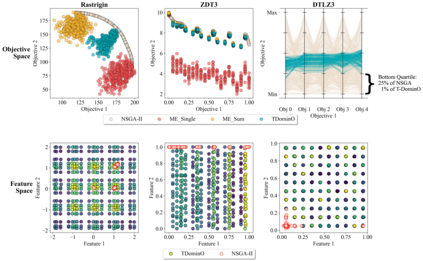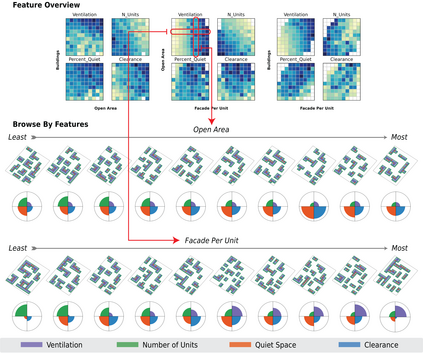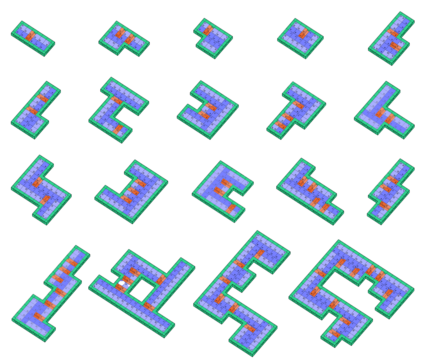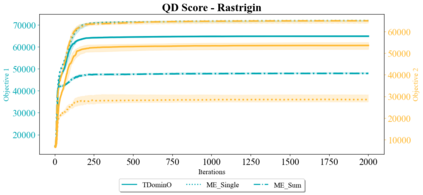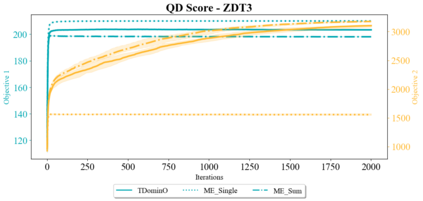Real-world design problems are a messy combination of constraints, objectives, and features. Exploring these problem spaces can be defined as a Multi-Criteria Exploration (MCX) problem, whose goals are to produce a set of diverse solutions with high performance across many objectives, while avoiding low performance across any objectives. Quality-Diversity algorithms produce the needed design variation, but typically consider only a single objective. We present a new ranking, T-DominO, specifically designed to handle multiple objectives in MCX problems. T-DominO ranks individuals relative to other solutions in the archive, favoring individuals with balanced performance over those which excel at a few objectives at the cost of the others. Keeping only a single balanced solution in each MAP-Elites bin maintains the visual accessibility of the archive -- a strong asset for design exploration. We illustrate our approach on a set of easily understood benchmarks, and showcase its potential in a many-objective real-world architecture case study.
翻译:现实世界的设计问题是各种制约、目标和特征的杂乱组合。 探索这些问题空间可以被定义为多标准探索(MCX)问题,其目标是在很多目标中产生一套具有高性能的多样化解决方案,同时避免任何目标的低效。 质量- 多样性算法产生所需的设计差异,但通常只考虑一个单一的目标。 我们提出了一个新的排名,即T- DominO, 专门用来处理MCX问题中的多重目标。 T-DominO将个人排在档案中其他解决方案的排名中,有利于个人,使其业绩平衡,优于那些以其他成本为代价在少数目标上优于少数目标的人。 在每个MAP- Elites bin 中只保留一个单一的平衡解决方案, 保持对档案的可视性 -- -- 这是设计探索的强大资产。 我们展示了一套易于理解的基准, 并在一个多目标真实世界的案例研究中展示其潜力。



